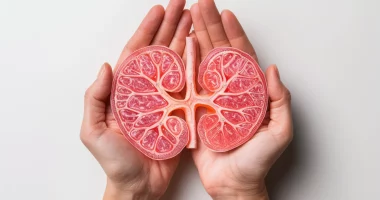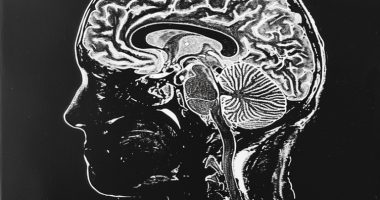Cholestatic liver disease
Definition
Cholestatic liver disease (cholestatic hepatitis) is a disease where the critical role lies in the bile flow restriction and the accumulation of its components in the liver. Clinically, the disease is manifested by itching, discomfort in the right subcostal area, intense jaundice, dyspepsia, enlargement of the liver, and the appearance of xanthelasma on the skin. In diagnosis, the principal values are general clinical and biochemical blood tests with determination of hepatic samples, ultrasound of the liver and gallbladder, sonography of the pancreas, and MRI of the abdominal cavity. Therapy aims to improve the outflow of bile and normalize the organ’s function.
General information
Cholestatic hepatitis is a reasonably rare pathology, the pathogenesis of which is based on intrahepatic cholestasis with deterioration of excretory function of cells and damage to the ducts. The disease detection frequency does not exceed 10% of all hepatitis with a chronic course. Cholestatic hepatitis predominantly occurs in the elderly.
Despite its relatively low prevalence, the disease is poorly treatable because it is only sometimes possible to identify its cause. The study of etiology and pathogenesis and the development of new therapy methods for cholestatic hepatitis is engaged in clinical gastroenterology.
Reasons
This pathology can be caused by intrahepatic or extrahepatic bile stasis. In the first case, bile outflow disorder is possible both at the level of liver cells and at the level of intrahepatic ducts. Causes of intrahepatic cholestasis with subsequent development of hepatitis can be:
- transition of acute viral hepatitis B, C, or other types of viral hepatitis into a chronic form;
- liver damage by Ebstein-Barr virus, herpes virus, cytomegalovirus, mycoplasma infection;
- various medications such as aminazine, some diuretics, antibiotics, anabolic steroids, and contraceptives;
- exposure to toxins, alcohol, and poisons;
- endocrine disorders.
Extrahepatic cholestasis is a consequence of obstruction of large ducts. In this case, its possible causes are:
- stone blockage of the common bile duct;
- chronic calculous cholecystitis;
- chronic pancreatitis;
- cancer of the head of the pancreas and tumors of other organs of the hepatobiliary system.
Against the background of cholestasis in the liver is the destruction of hepatocytes with subsequent impairment of organ function. In some cases, it is not possible to establish the cause of the disease, which is interpreted as idiopathic cholestatic hepatitis.
Symptoms of cholestatic hepatitis
The symptomatology of cholestatic hepatitis is similar to the manifestations of other chronic liver diseases. Distinctive features are more pronounced jaundice and skin itching, which is often the first manifestation of the disease. In this case, itching is caused by the ingress of bile acids into the blood due to stagnation of bile in the liver. Also, in patients with cholestatic forms of hepatitis, xanthomas often occur, which have the appearance of yellow spots.
The color of the feces usually becomes lighter, and the urine darkens. Palpatory findings include increased size and density of the liver without splenomegaly. During the period of exacerbation, fever and mild symptoms of intoxication are possible. The severity of the clinical picture depends on the severity of cholestasis.
Diagnosis
Laboratory and instrumental methods of investigation play important roles in diagnosing the disease. The main laboratory technique for diagnosing cholestasis is a biochemical blood test.
- Liver tests. In a biochemical blood test, the level of bilirubin at the expense of the direct fraction, an increase in the level of transaminases, alkaline phosphatase (more than five times), gamma-glutamine transferase, and cholesterol is noted. Increased amounts of phospholipids, B-lipoproteins, and bile acids in the blood can also be determined.
- Serologic and PCR diagnostics. To confirm the viral etiology of the disease, specific markers are studied by ELISA and PCR methods. The determination of antimitochondrial antibodies is a characteristic serologic marker of intrahepatic cholestasis.
Following instrumental methods are also used:
- Ultrasound of the liver and gallbladder. Ultrasound examination reveals signs of chronic hepatitis. Ultrasound of the biliary tract, gallbladder, and pancreas can confirm or exclude extrahepatic cholestasis.
- Radiography. If the diagnosis of cholestasis is difficult, retrograde cholangiopancreatography, percutaneous transhepatic cholangiography, or cholecystography is performed. These procedures allow the detection of stones in the biliary tract in cases where they are not visible on ultrasound.
- MRI. Modern non-invasive methods to identify the causes of cholestatic hepatitis are MR pancreatic cholangiography and MRI of the hepatobiliary zone.
- Biopsy with histology. A liver puncture biopsy can be performed to study morphologic changes, although it does not play a decisive role in diagnosing cholestasis.
Treatment of cholestatic hepatitis
Treatment of chronic hepatitis with cholestatic syndrome should be based on eliminating the cause that led to cholestasis. If the cause of the disease is the impact of toxic factors or medications, it is necessary to stop their intake into the body. All patients are recommended to adhere to a diet that excludes spicy, fatty, and fried food. It is obligatory to minimize the use of alcohol, which negatively affects the liver cells. It is also recommended to eat a complete diet with sufficient protein content.
Drug therapy
At any stage of the disease, it is desirable to take fat-soluble vitamins A, E, and B12. To improve hepatocyte function, liver protectors, essential phospholipids, and lipoic acid may be prescribed. In the presence of intrahepatic cholestasis with high inflammatory process activity, small doses of prednisolone are prescribed to reduce the severity of pathological changes.
If the patient is bothered by severe itching, it is necessary to use drugs to neutralize bile acids, such as cholestyramine or lignin. The most effective agent for treating intrahepatic cholestasis is ursodeoxycholic acid, which improves the outflow of bile. The drug is recommended for all patients with cholestatic hepatitis.
Surgical treatment
If hepatitis is caused by extrahepatic cholestasis, it is necessary to eliminate its cause. For this purpose, various surgical methods are used:
- laparoscopic or open cholecystectomy;
- resection of the head of the pancreas;
- extraction of bile duct concretions at RPCH;
- endoscopic balloon dilatation of the sphincter of Oddi, etc.
- in severe cases, liver transplantation may be indicated.
All these treatment options are available in more than 150 hospitals worldwide (https://doctor.global/results/diseases/cholestatic-liver-disease). For example, liver transplantation can be done in 10 clinics across Turkey (https://doctor.global/results/asia/turkey/all-cities/all-specializations/procedures/liver-transplantation).
Prognosis and prophylaxis
With proper treatment and elimination of the cause of cholestasis, the prognosis for cholestatic hepatitis is generally favorable. Prevention of the disease is reduced to the cessation of alcohol and other hepatotoxic substances in the body, as well as timely treatment of liver pathology.



